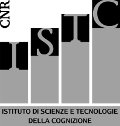Recent models based on artificial networks have shown themselves to be efficient in learning some normal cognitive capacities, such as reading. After the trained neural networks were intentionally damaged, it has also been possible to observe evident analogies between the 'pathological' behaviour of the network and the behaviour of patients having specific brain lesions. These results have suggested the possibility of utilizing these methods for the development of rehabilitation techniques. In this article, we present the first results of research carried out in this field and we try to illustrate how it is possible to extract from the study of these artificial systems useful informations concerning the patient rehabilitation. In particular we attempt to explain how these methods could be helpful in determing the type, quantity and best distribution of the stimuli to be used during the rehabilitative process, according to the pathological behaviour exhibited in the individual patients as well.
Learning processes in artificial neural networks: Implications for the neuro-rehabilitation | PROCESSI DI APPRENDIMENTO IN RETI NEURALI ARTIFICIALI: IMPLICAZIONI PER LA NEURO-RIABILITAZIONE
Publication type:
Articolo
Publisher:
Editrice Pisani., Roma, Italia
Source:
Rivista di Neurobiologia 40 (1994): 483–487.
info:cnr-pdr/source/autori:Nolfi, Stefano; Calabretta, Raffaele/titolo:Learning processes in artificial neural networks: Implications for the neuro-rehabilitation | PROCESSI DI APPRENDIMENTO IN RETI NEURALI ARTIFICIALI: IMPLICAZIONI PER LA NEURO-RIABILITA
Date:
1994
Resource Identifier:
http://www.cnr.it/prodotto/i/296668
http://www.scopus.com/record/display.url?eid=2-s2.0-0028685169&origin=inward
Language:
Ita



